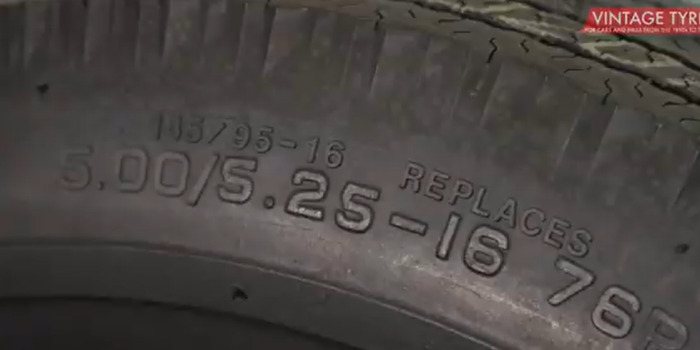How to Read Tyre Codes
When seeking the right tyres for your vintage vehicles, you’ll have to refer to the numbers on each tyre’s sidewall. Here, Ben from Vintage Tyres explains what the different markings mean, highlighting examples for cross ply tyres and radial tyres.
What Do the Numbers on Tyres Mean?
The different numbers and codes you’ll see on your tyres relate to a couple of metrics:
- - The width of the tyre
- - The diameter of the wheel
- - The load rating
- - The speed rating
- - Four-digit date code (when the tyre was made)
Understanding Cross Ply Tyre Markings
The example cross ply tyre in the video has the following markings: 5.00/5.25 – 16 76
This cross ply tyre is dual marked 500/525, which means it replaces two tyres that would’ve been available back in the day. This metric relates to the overall width of the tyre in inches.
The 16 in the sequence of numbers relates to the diameter of the wheel that’ll fit inside the tyre.
76 refers to the load rating – i.e. how much rate the tyre can take. And P refers to the speed rating – i.e. the top speed the tyre can travel at safely.
The denotation of ‘Tube Type’ printed on the tyre is quite self-explanatory, indicating that this tyre won’t hold air without an inner tube in it.
Understanding Radial Tyre Marking
The example radial tyre in the video has the following markings: 195/55R13 80V
The 195 relates to the overall width of the tyre.
The 55 relates to the profile or aspect ratio, which translates as being 55% of the overall width of the tyre.
The R denotes ‘radial, and the 13 refers to the diameter of the wheel that it fits.
80 is the tyre’s load rating (how much weight it can carry), and V is the speed rating.
Date Code on Tyres
Since 2000, tyre markings have also included a four-digit date code to signify when the tyre was manufactured.
The date code will usually appear printed in a lozenge shape on the side of the tyre, with a date showing which week and year it was built in.
For example, a date code showing 0819 means the tyre was made in the eighth week of 2019.
When Should You Replace Your Tyres?
At Vintage Tyres, we recommend replacing your tyres after 10 years. At this point, it doesn’t matter what your tread depth is like, as the tyre will have likely hardened (vulcanised) to such a degree that it would be quite dangerous to drive on, particularly in damp conditions.
In need of any tyres for your classic vehicle? We stock an extensive selection of vintage tyres suitable for a range of models. Browse the Vintage Tyres collection to see if we’ve got what you’re after.
If it is time to replace your tyres or you need an expert eye, we also offer tyre fitting services in Beaulieu. If require further advice, you can get in touch on 01590 612261.








